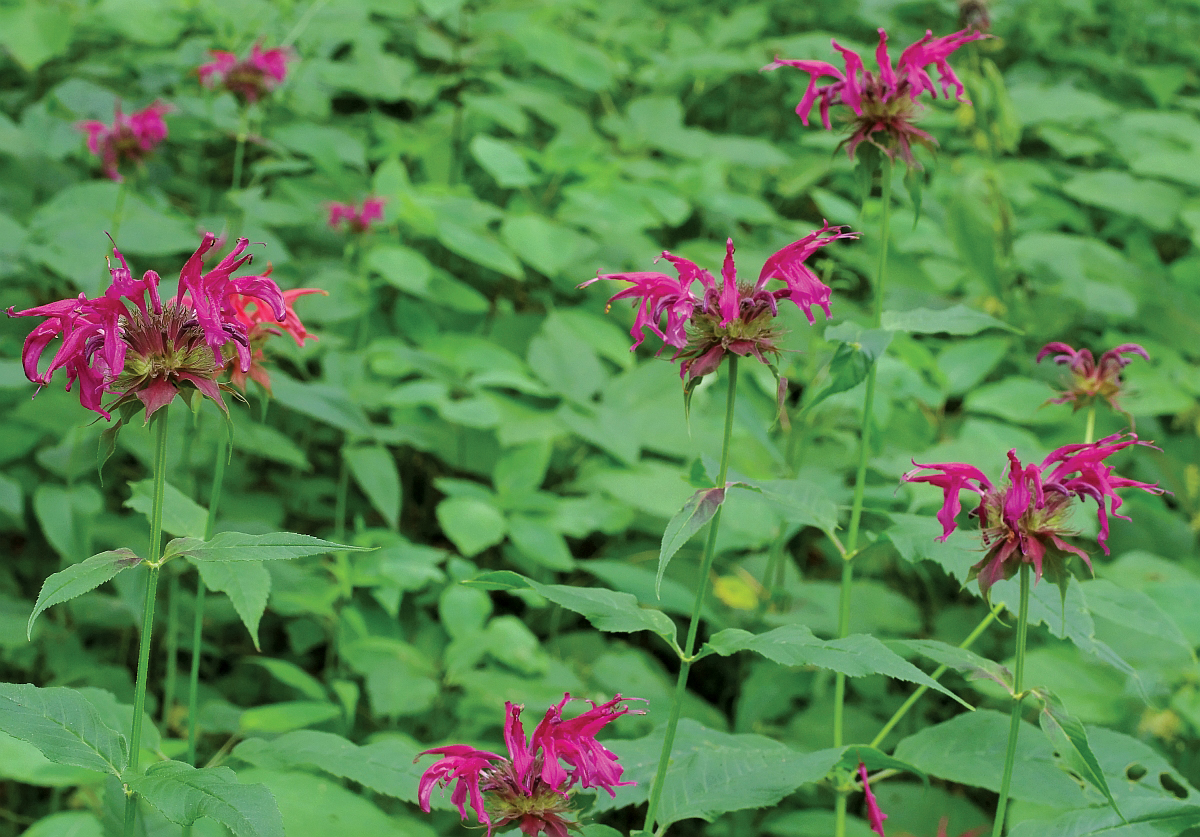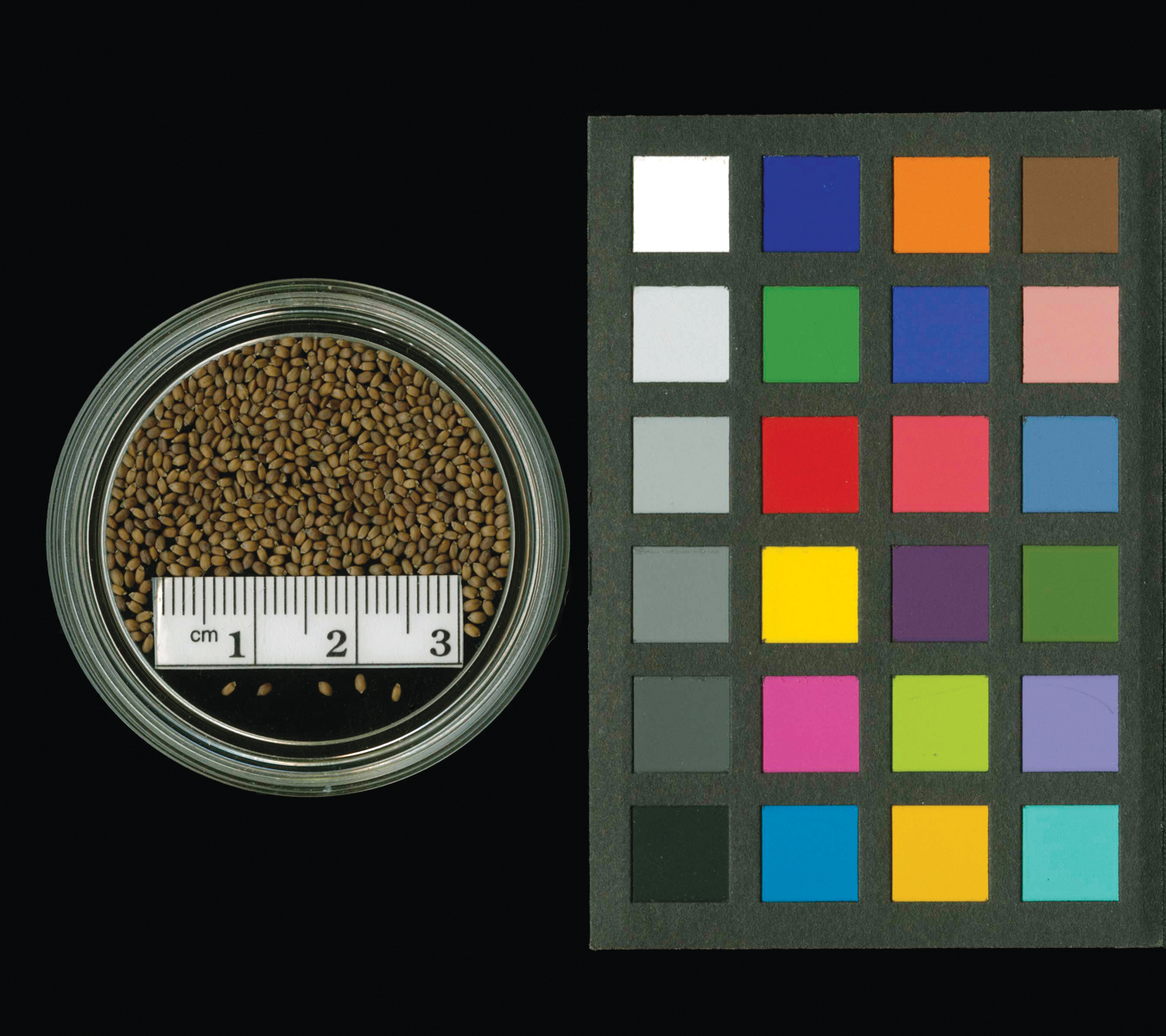Building a germplasm collection can take years or, more realistically, even multiple careers to assemble. The United States National Plant Germplasm System has nineteen stations around the country, and the goal is to acquire, conserve, evaluate, and distribute genetically diverse plant material. As a genebank curator at the North Central Regional Plant Introduction Station in Ames, Iowa, I’m responsible for managing collections of woody plants like ashes (Fraxinus) and chokeberries (Aronia), and also herbaceous plants. The collections arise from plant exploration by staff members (I typically make at least five collection trips per year), through exchange with other genebanks or public gardens, or by specific arrangements between a curator and an independent collector. The latter became more important than ever in 2020, as the coronavirus pandemic restrictions prevented normal travel.
One of our most notable collections from this unusual season occurred in the mountains of northeastern Tennessee. The story, however, began in June of 2018, when I sent an email to Roger McCoy, the director of the Tennessee Division of Natural Areas, looking for contacts in eastern Tennessee who might be able and willing to collect native Monarda species. Monarda, or the bee balms, is a group of herbaceous plants native to North America and Mexico and is represented by approximately eighteen species. Our Monarda germplasm collection in Ames currently includes fourteen species, represented by 164 accessions. In the last couple of years, we’ve acquired interesting samples, including three species that were first described by botanists within the past decade: M. luteola, found in northeastern Texas and southwestern Arkansas; M. austroappalachiana, endemic to the Southern Appalachians; and M. brevis, a dwarf, early-flowering species found in West Virginia and historically in Virginia.



McCoy connected me with Marty Silver, a park ranger at Warriors’ Path State Park, who graciously volunteered to help. Silver stated he had “limited botanical skills” and was simply an “interested amateur botanist spending spare time in the field in various wild places in Tennessee.” To ensure initial success, we selected Monarda didyma as the target from eastern Tennessee, since we had no holdings of the species from the region. The species also displays very conspicuous red flowers from July through August and is somewhat ubiquitous in the target area. This would make the plants relatively easy to locate. By the end of August 2018, Silver had documented several flowering patches of M. didyma, and that fall, he returned and successfully collected seed (accession Ames 34356). Despite living approximately an hour away from the sampling site, Silver conducted this travel and exploration on a volunteer basis.
As Silver and I communicated after the 2018 collection, he drew my attention to a very thorough floristic survey of the nearby Rocky Fork Tract, written by Foster Levy and Elaine Walker, published in 2016. Silver connected me with Levy, who brought our attention to several Monarda specimens from the area that were labeled M. × media, a taxon that was missing within our germplasm collection. We designated this hybrid as our next target.
Monarda × media is of potential interest for development as an ornamental landscape plant. Moreover, when I reviewed the published literature and herbarium specimens, I found a curious backstory for the taxon, suggesting that well-documented wild collections could also support taxonomic research. The taxon was described over two hundred years ago, in 1809, by the German botanist Carl Ludwig Willdenow, who published the name without the multiplication symbol. The symbol is used to indicate plants of hybrid origin, although it is not required in a taxonomic name nor does authorship change in the event a name is later recognized as a hybrid. While Willdenow’s description does not suggest that he recognized this taxon as a hybrid, he nonetheless noted an affinity to M. fistulosa, commonly known as wild bergamot. By 1901, Merritt Fernald, a botanist at Harvard, described observing numerous intermediate forms of M. media, making separation from M. fistulosa difficult.
Currently, Monarda × media is recognized as a variable group of plants with intermediate characteristics of M. didyma and either M. fistulosa or M. clinopodia or both. These numerous intermediate forms may stem from the various hybrid combinations, and thus, the name M. × media should ultimately be assigned to a specific combination (for instance, M.
didyma crossed with M. clinopodia), with new names given to each of the others. Surprisingly, Willdenow did not designate a type herbarium specimen, which could make it more difficult to determine which combination should, in fact, retain the original name.
To correctly sample true-to-type specimens of Monarda × media in nature, Silver would need to mark populations in bloom, since M. clinopodia—a white-flowered species—and M. didyma are often found nearby; sometimes they are even intermixed with M. × media. This raises an interesting question about whether M. × media plants are stable in nature or whether they require the parents to constantly resupply them. Despite subsequent discussion about conducting reconnaissance and sampling for M. × media in 2019, Silver had other projects that left no time to acquire samples.
The following year, as implications of the coronavirus pandemic were becoming clear, I followed up by asking about the possibility of sampling a Monarda × media population. Silver quickly replied, “I am much more out and about in the field (outside and distanced) these days. If pointed in the right direction, I’ll be glad to try and find populations within my limited taxonomic skills.” While the pandemic quickly resulted in travel cancellations and restrictions (out of state, not to mention out of the country) across many agencies, Silver saw being in the field as an opportunity to be completely distanced while regaining a sense of normalcy.


Using Levy’s herbarium vouchers, we identified a total of three potential sites, but since the specimens were described from a broad geographic area, their relocation was going to be challenging. A few weeks later, Silver reported finding Monarda × media while on a hike on his day off. His hike to get to these populations was three and a half miles (one way) with an elevation climb of over two thousand feet. He took notes, GPS coordinates, and photos. Making the hike once again in the fall, Silver relocated the five previously flagged flowering patches, but one patch had been completely destroyed and another patch was nearly decimated due to human disturbance. He collected seeds from the available patches and then shipped them to Iowa. I assigned them an accession number (Ames 35579) and deposited them into the repository’s freezer, which maintains the seeds at 0°F (-18°C). This collection will be periodically monitored for viability, and when germination falls below a critical level, it will be regenerated using controlled pollination techniques ensuring the preservation of the genetic profile for the future. Since Silver sampled each clonal patch separately along with appropriate plant descriptions, the collections will be important resources for future research (including ecogeographic and phylogenetic studies). The collections might also be useful for selecting superior genotypes for the nursery industry.
Having one collection of this taxon is, of course, only a start—additional samples are desired. Yet Silver’s collections demonstrate the critical importance of local assistance while assembling a comprehensive germplasm collection, especially given the amount of time and effort required to acquire even a single collection. In the end, I’ll never forget Silver humbly labeling himself as an “amateur botanist with limited taxonomic skills,” as his Monarda × media collection is one of the most exciting, well-documented samples of Monarda that I’ve accessioned in my nearly twenty-year career.
Jeffrey D. Carstens is the curator for woody and herbaceous plants at the North Central Regional Plant Introduction Station.
Citation: Carstens, J. D. 2021. Building a Comprehensive Plant Collection. Arnoldia, 78(3): 2–4.
